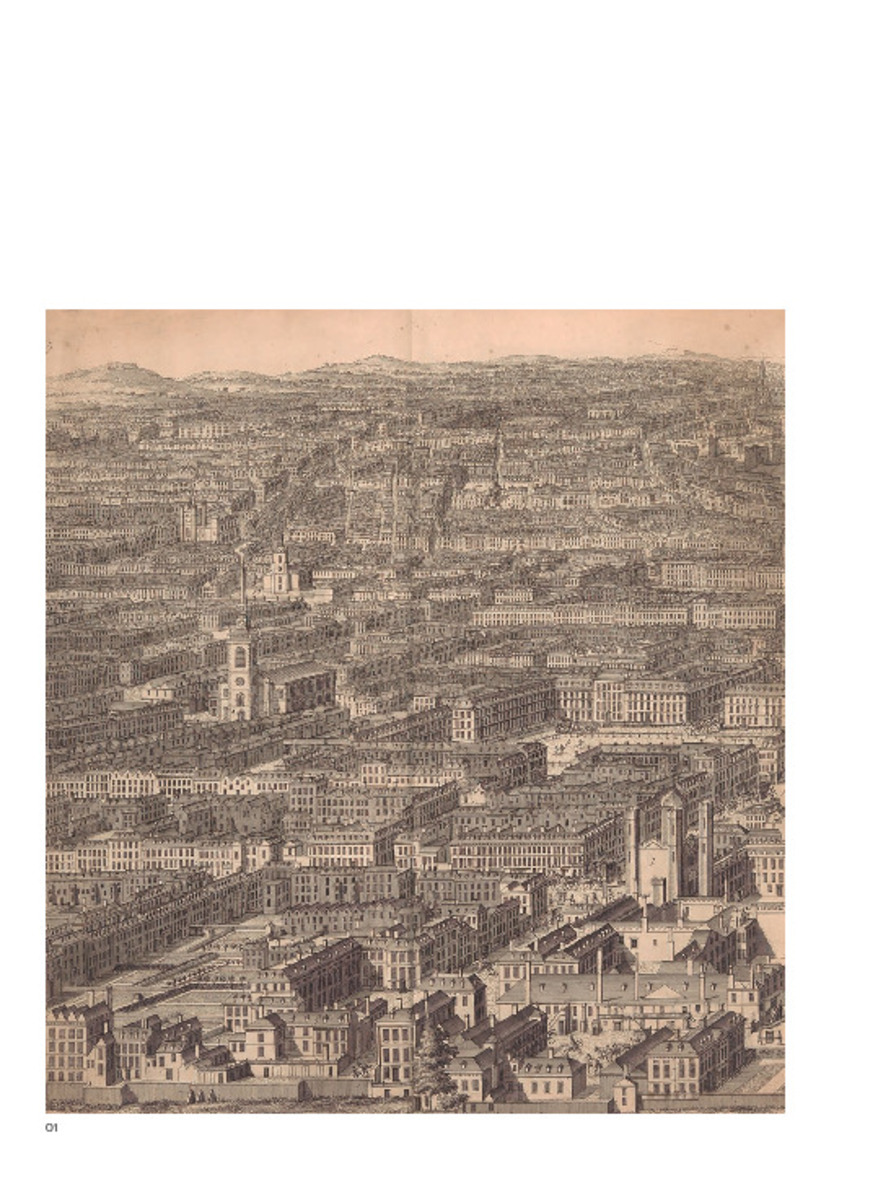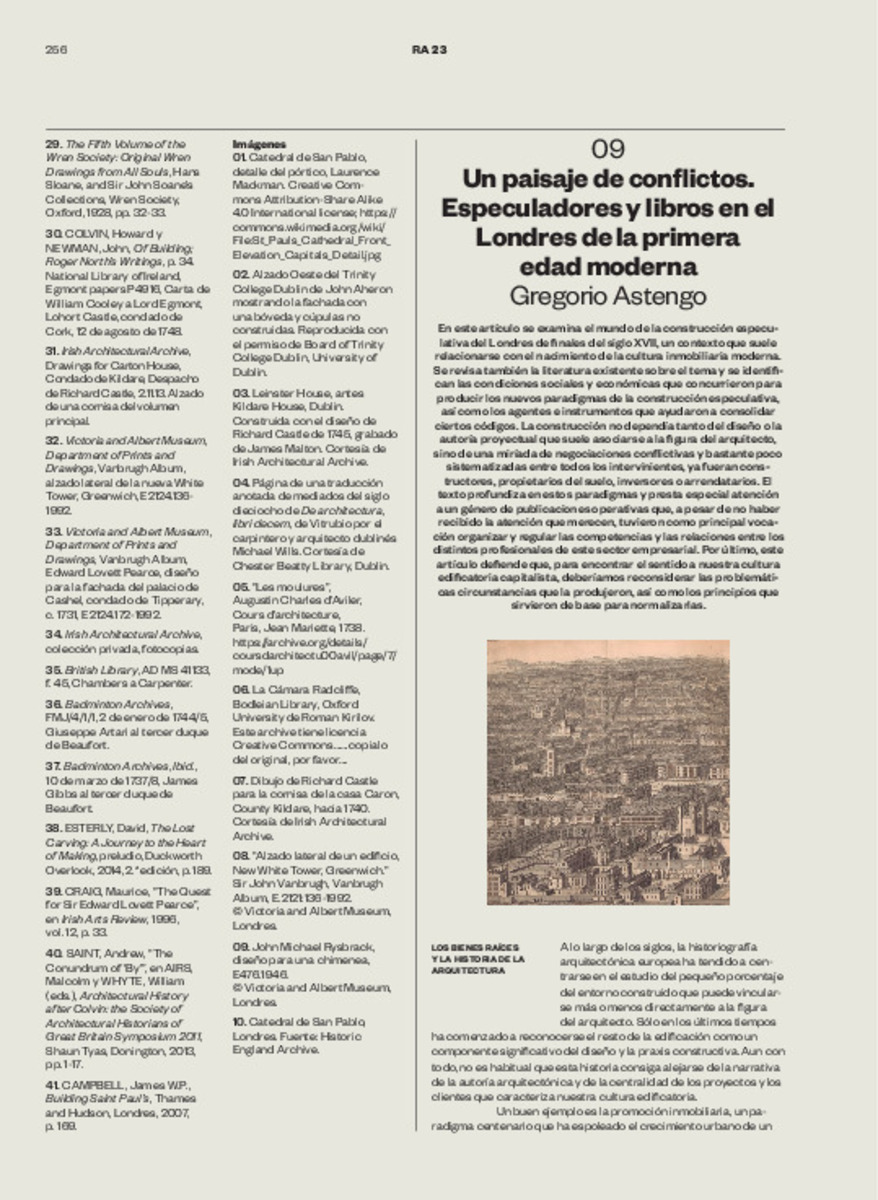Full metadata record
| DC Field | Value | Language |
|---|---|---|
| dc.creator | Astengo, G. (Gregorio) | - |
| dc.date.accessioned | 2021-11-03 | - |
| dc.date.accessioned | 2021-11-09T13:14:44Z | - |
| dc.date.available | 2021-11-09T13:14:44Z | - |
| dc.date.issued | 2021 | - |
| dc.identifier.citation | Astengo, G. (Gregorio). "A Landscape of Conflict: Speculators and Books in Early Modern London". Ra. Revista de Arquitectura. 23, 2021, 146 - 161 | es |
| dc.identifier.issn | 1138-5596 | - |
| dc.identifier.uri | https://hdl.handle.net/10171/62491 | - |
| dc.description.abstract | This article examines the speculative building world of late seventeenth-century London, a context often associated with the birth of modern real estate culture. It examines existing literature on the subject, and identifies the economic and social conditions that converged in producing new paradigms of speculative construction, as well as the actors and instruments involved in its codification. Rather than through the design and authorial practices usually associated with architects, building was realized based on a constellation of conflicting and largely still unsystematized negotiations between the stakeholders, such as builders, landowners, investors, and lessees. This article discusses these paradigms, particularly in relation to a fundamental and overlooked genre of the operational publications produced to organize and codify professional roles and relationships in the business world. I ultimately argue that in order to make sense of our capitalist building culture, we should reconsider the contentious circumstances that produced it, as well as the knowledge base generated to normalize these circumstances. | en_US |
| dc.description.abstract | En este artículo se examina el mundo de la construcción especulativa del Londres de finales del siglo XVII, un contexto que suele relacionarse con el nacimiento de la cultura inmobiliaria moderna. Se revisa también la literatura existente sobre el tema y se identifican las condiciones sociales y económicas que concurrieron para producir los nuevos paradigmas de la construcción especulativa, así como los agentes e instrumentos que ayudaron a consolidar ciertos códigos. La construcción no dependía tanto del diseño o la autoría proyectual que suele asociarse a la figura del arquitecto, sino de una miríada de negociaciones conflictivas y bastante poco sistematizadas entre todos los intervinientes, ya fueran constructores, propietarios del suelo, inversores o arrendatarios. El texto profundiza en estos paradigmas y presta especial atención a un género de publicaciones operativas que, a pesar de no haber recibido la atención que merecen, tuvieron como principal vocación organizar y regular las competencias y las relaciones entre los distintos profesionales de este sector empresarial. Por último, este artículo defiende que, para encontrar el sentido a nuestra cultura edificatoria capitalista, deberíamos reconsiderar las problemáticas circunstancias que la produjeron, así como los principios que sirvieron de base para normalizarlas. | es_ES |
| dc.language.iso | eng | - |
| dc.publisher | Servicio de Publicaciones de la Universidad de Navarra | es_ES |
| dc.rights | info:eu-repo/semantics/openAccess | es_ES |
| dc.subject | Londres | - |
| dc.subject | especulación | - |
| dc.subject | promotores | - |
| dc.subject | manuales | - |
| dc.title | A Landscape of Conflict: Speculators and Books in Early Modern London | en_US |
| dc.type | info:eu-repo/semantics/article | es_ES |
| dc.identifier.doi | 10.15581/014.23.146-161 | - |
| dadun.citation.endingPage | 161 | - |
| dadun.citation.publicationName | Ra. Revista de Arquitectura | - |
| dadun.citation.startingPage | 146 | - |
| dadun.citation.volume | 23 | - |
Statistics and impact
Items in Dadun are protected by copyright, with all rights reserved, unless otherwise indicated.







